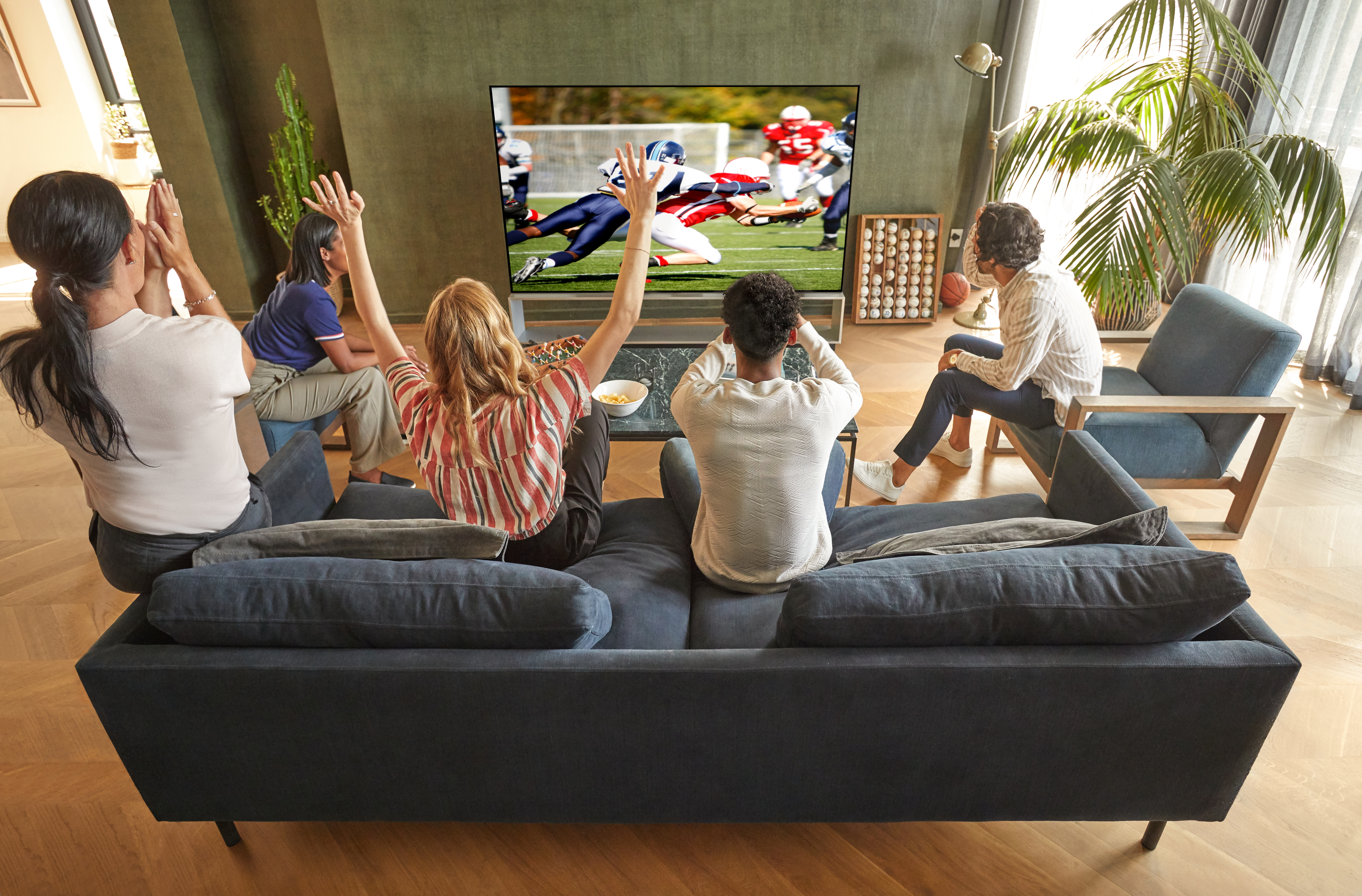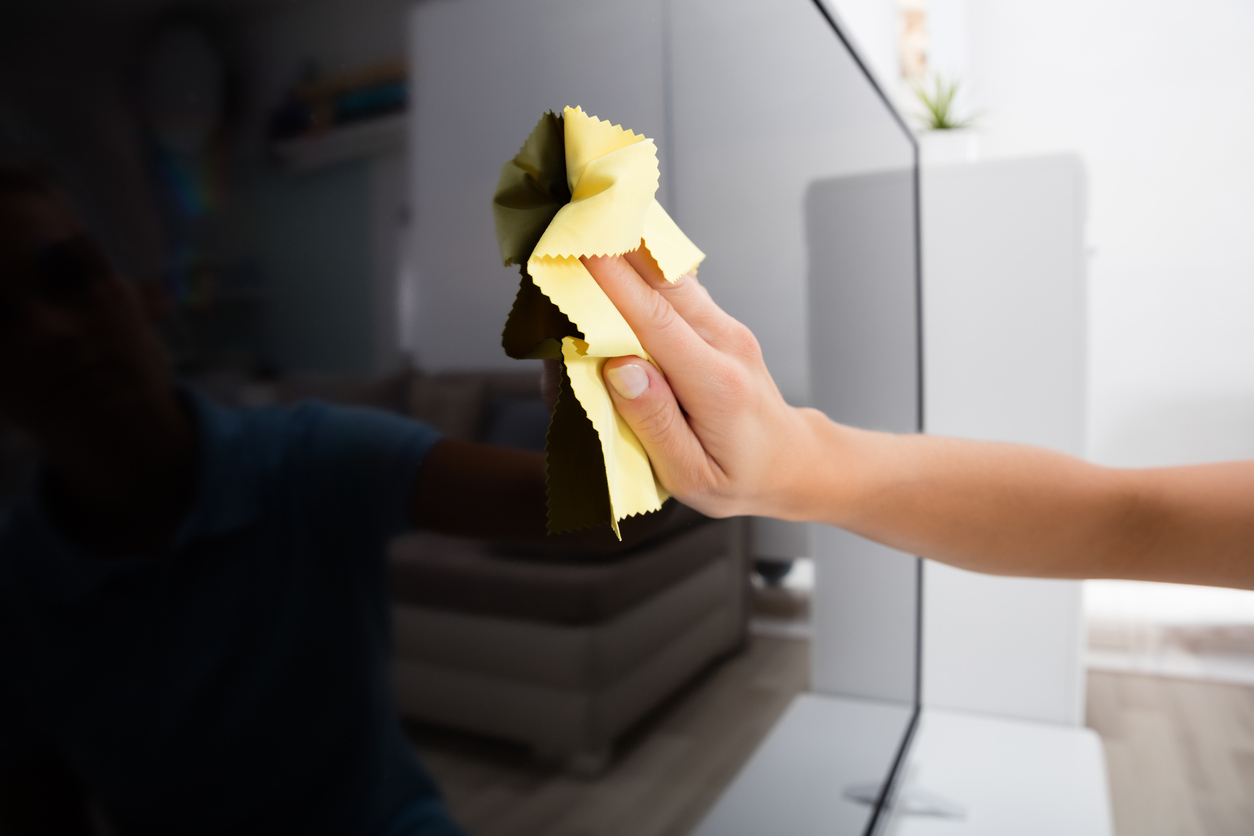Enjoying entertainment shouldn’t come with compromises, and television manufacturers fully aware of buyers’ needs. As a result, brands are continuously developing exciting new ways for users to get the most out of streaming, movies, and video games to the point that the electronics market is evolving faster than consumers can keep up.
While the idea of innovative electronics on the horizon is exhilarating, it’s still important to know what’s available on the market now. One of the more elusive television options currently available are OLED TVs, yet even with all the buzz, many shoppers still aren’t sure what and OLED television is, exactly. For clarification, follow along for answer to common OLED questions.

What does OLED TV mean?
As an acronym, OLED stands for organic light-emitting diodes in reference to the diodes that are capable of emitting light. As far as performance goes, OLED means users can enjoy entertainment at more immersive levels with pixel control that displays 4K at the best quality.
What is an OLED TV?
By definition, OLED TVs contain over 8 million pixels, each capable of independently producing light when an electrical current is passed through. By contrast, LED, LCD, and QLED televisions use a backlight to illuminate pixels. By working individually, the OLED pixels are able to deliver the quickest response rates and improved image quality.
Since OLED models don’t require the same backlighting as QLED or LCD counterparts do, they are also thinner and lighter than their counterparts.

What’s the difference between OLED and QLED?
Unlike OLED TVs, which are capable of casting light pixel-by-pixel, QLED TVs use backlighting which passes through a special filter that displays a quantum dot color spectrum. This process creates dimming zones which, in normal circumstances, are used to block out light or light up when programmed to. However, one of the common concerns of QLED televisions is image bleeding, also known as blooming.
This happens when adjacent illuminated zones transfer light into dimmed zones, blurring the edge between dark and light images. Since OLED televisions operate on a more molecular level, the amount of bleeding is virtually non-existent, meaning viewers will enjoy cleaner lines and enhanced contrast between black and colored images. Additionally, this also allows OLED TVs to be more energy-efficient.
Is an OLED TV worth buying?
If you find yourself wondering why OLED TVs are better than other televisions on the market, the answer can be summed up in three factors:
- Unmatched black display
- The quickest pixel response time
- Vivid colors
While first-generation OLED TVs suffered from impaired image brightness compared to LED TVs, including QLED models, newer OLED options feature improved image brightness that is essentially as good as the competition.
Currently, manufacturers are unable to make OLED panels to keep up with the demand, meaning they tend to be pricier. However, with new technology being developed from several names, industry leaders are expected to roll out more budget-friendly options soon.

Who makes the best OLED TV?
Fun fact: LG is the only manufacturer of OLED television panels in the industry. That means while competitors, like Sony, may carry a catalog of OLED TVs, their products are using LG screen technology.
Currently, LG is the leader of OLED TVs, while Sony is also a considerable competitor. Samsung currently only carries QLED TVs but has announced production of LCD and QLED televisions will stop by the end of 2021 in exchange for their newest TV lineup that uses both quantum dots and organic diodes.
- See how the industry leaders rank in our LG and Samsung TV comparison blog
Ultimately, which OLED manufacturer is superior depends on what a buyer is searching for. Generally, shoppers have shown to care most about these common factors when shopping for an OLED TV:
- Best OLED TVs for brightness: LG
- Best OLED TVs for contrast: LG
- Best OLED TVs for sports: LG followed by Sony
- Best OLED TVs for movies: Sony followed by LG (also see Best TVs for Movies)
- Best OLED TVs for gaming: LG with honorable mention for Samsung QLED TVs (Note: QLED TVs will not have the same quick response rate as an OLED TV)

OLED vs. 4K: Which is better?
It’s easy to group industry terms such as 4K and OLED together into the same category, but the reality is there is no such thing as OLED vs 4K.
There is a difference between 4K and OLED, and that is:
- 4K televisions are categorized by their resolution; 3840 x 2160 pixels running horizontally and vertically, respectively.
- OLED technology uses a television’s pixels to display images.
While 4K televisions are still a popular choice, OLED TVs with 4K resolution offer nearly unparalleled image display suitable for all sorts of media, including game play, streaming, or movie watching.
Is OLED better than plasma?
If it’s been a while since your last television purchase, chances are your current TV might be a plasma. However, in 2014, industry leaders LG, Samsung, and Panasonic all effectively put an end to the series in exchange for emerging LCD (liquid crystal display) technology.
At the time, plasma televisions boasted improved contrast ratios and colors, with rapid response rates and better viewability from wide angles. However, plasma TVs were only capable of delivering a range of resolutions between 1,024 x 768 on smaller screens and up to 1920 x 1080 on larger screens.
When it comes to plasma versus OLED, the latter is able to provide superior pixel control, which means every pixel is sharper, brighter, and more vivid than plasma image display.
How do I clean my OLED TV screen?
It’s important to understand how to clean an OLED screen since failure to do so correctly could permanently damage the panel. That’s because the surface uses a proactive film which can damage if cleaned using corrosive chemicals, alcohol, or thinners.
When possible, the best solution to clean an OLED screen is simply water.
- Begin by disconnecting the TV (better safe than sorry).
- Next, pass over the surface with a dry microfiber cloth to capture dust and debris.
- Once dusted, run a microfiber cloth under water and wring it thoroughly.
- Then, wipe the surface and follow with a dry cloth.
For stubborn messes, manufacturers recommend creating a solution using half water and half white vinegar. Pour into a spray bottle. Never spray any solution onto an OLED screen; instead, squirt some onto a microfiber cloth and follow steps 2 through 4 above.

Can an OLED TV be laid flat?
The only time an OLED TV should be flat is when it is in its original packaging supported by foam. Manufacturers recommend leaving the TV inside the box until it’s ready for installation.
If an OLED TV is placed flat without support or protection, the screen is subject to compromised support in the center, which can place strain on the corners and edges, potentially cracking or damaging the screen.
Always lift and support an OLED upright. If the television set has been removed before installation is ready and there are no feet to hold it, consider using a sofa or similar soft surface to hold the set upright until it can be properly installed.
Reward Your Senses
Spencers TV & Appliance is the premier supplier of home electronics and appliances in the Phoenix area with 10 locations across Mesa, Scottsdale, and Glendale and in between! We proudly provide a reliable inventory with the largest selection and best prices in Arizona. Shop online or in-store today!